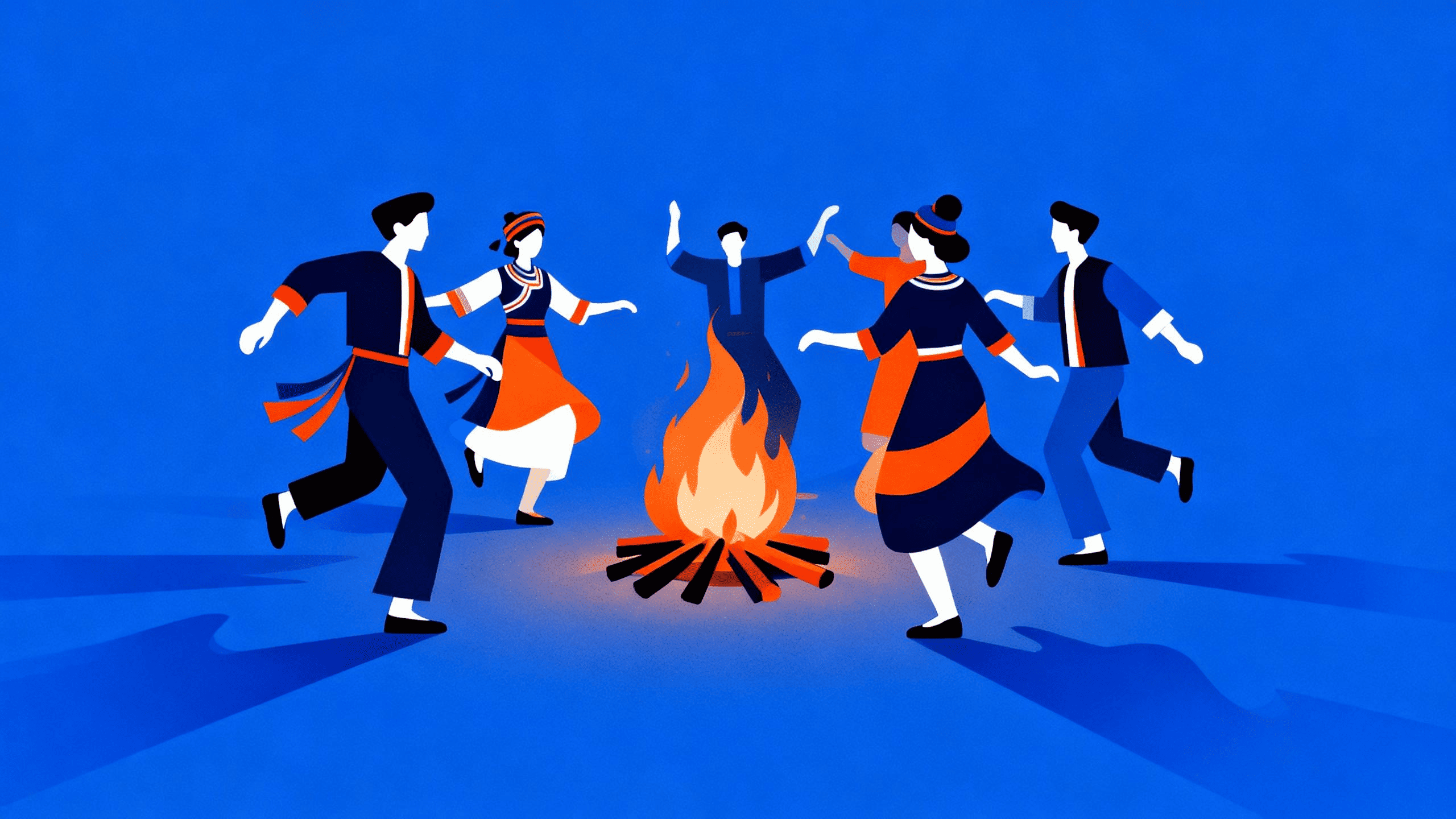China’s Ethnic Minority Festival Tourism Guide: Complete Planning Resource with Insider Perspectives
China’s 55 ethnic minorities celebrate over 1,200 traditional festivals yearly. Most travel guides list the same eight festivals with surface-level descriptions. We’re taking a different approach—sharing what eight years of organizing minority festival tours taught us about which celebrations deliver authentic cultural immersion versus staged performances.
This guide focuses on practical intelligence other articles won’t tell you. We’ll reveal booking strategies that prevent disappointment, explain why certain “famous” festivals disappoint while obscure ones transform, and share traveler feedback that contradicts official tourism narratives.
READ ALSO: The Ultimate Guide to China’s Ethnic Minority Destinations
Table of Contents
Understanding China’s Ethnic Minority Festival Landscape
China’s ethnic minorities represent 8.9% of the population yet preserve the majority of traditional celebrations. With 1,200+ minority festivals versus roughly 500 Han majority festivals, these communities maintain cultural practices that existed before standardization pressures.
The festivals aren’t tourism products created for visitors. They’re living traditions that communities celebrate for cultural transmission, religious observance, agricultural marking, and social bonding. Tourism participation is recent—most festivals operated unchanged for centuries before infrastructure made them accessible.
What Makes Minority Festivals Worth International Travel
Authentic Cultural Participation: Unlike observation-based cultural attractions, festivals invite participation. You’ll be splashed with blessed water, invited to dance circles, offered homemade rice wine, and included in community celebrations.
Intergenerational Cultural Transmission: Festivals are when grandmothers teach granddaughters traditional embroidery patterns, fathers demonstrate ritual procedures to sons, and communities pass cultural knowledge through lived practice rather than classroom instruction.
Regional Cultural Variation: Each minority group—and often each village within groups—celebrates with distinct customs, costumes, music, and rituals. The Miao people alone have over 200 festival variations across different Miao subgroups.
8 Premier Ethnic Minority Festivals for International Travelers
These festivals offer the best combination of cultural significance, accessibility, and authentic experience potential.
1.
Water Splashing Festival (泼水节) – Dai People
Time: Lunar 6th month, mid-month (typically mid-April)
Location: Xishuangbanna Dai Autonomous Prefecture, Yunnan
Duration: 3-4 days
Participating Groups: Dai, De’ang, Blang, Achang

Cultural Significance: The Dai New Year celebration combines Buddhist purification rituals with community renewal. Water symbolizes blessing removal and prosperity welcoming. The festival marks the transition between dry and rainy seasons—critical timing for rice agriculture that has sustained Dai communities for over a thousand years.
Festival Structure:
Day 1 – Temple Worship & Traditional Ceremonies: Morning ceremonies begin at 6:00 AM at Buddhist temples throughout Xishuangbanna, particularly Wat Pajie in Jinghong. Dai families bring offerings of flowers, fruit, and incense. Monks conduct rituals while devotees bathe Buddha statues in blessed water. This authentic religious component occurs before most tourists arrive—experiencing it requires early rising and cultural sensitivity.
Day 2 – Main Water Splashing: The famous water battles occur primarily in Jinghong city center and designated celebration squares. What begins as gentle blessing with small amounts of water escalates into full-scale water warfare. Locals and tourists use buckets, water guns, and traditional bamboo tubes. According to Dai belief, the more water you receive, the more blessings you accumulate for the coming year.
Day 3 – Dragon Boat Races & Cultural Performances: Traditional dragon boat competitions on Lancang River feature village teams that train year-round. These aren’t exhibitions—villages maintain centuries-old rivalries with real pride at stake. Evening lantern releases over the river create spectacular atmosphere as thousands of floating lights drift downstream carrying prayers and wishes.
Scale & Tourism Impact:
The 2025 festival attracted 2.2 million visitors and generated 2.665 billion yuan in tourism revenue. This massive scale means excellent infrastructure but also significant crowds and commercialization at main venues.
Authenticity Assessment:
- Temple ceremonies: Level 5 (completely authentic)
- Village preparations: Level 4 (authentic with tourist presence)
- Main square water battles: Level 2 (tourism-oriented spectacle)
- Dragon boat races: Level 4 (genuine competition with spectator accommodation)
Insider Tips: Arrive two days before the festival begins. Watch women preparing traditional foods, men repairing dragon boats, and families conducting temple cleaning ceremonies. These preparation activities provide cultural context the chaotic main events cannot offer. Book accommodations 2-3 months in advance as festival period prices increase 50-80%. Bring waterproof phone cases and quick-dry clothing—you will get completely drenched.
Best for: First-time minority culture visitors, families with children, travelers wanting immediate participation without language barriers, photographers seeking colorful action shots.
2.
Shoton (Yogurt) Festival (雪顿节) – Tibetan
Time: Lunar 6th month, 30th day (typically late August)
Location: Lhasa, Tibet Autonomous Region
Duration: 7 days
Alternative Names: Buddha Display Festival (展佛节), Tibetan Opera Festival

Cultural Background: “Shoton” translates to “yogurt banquet” in Tibetan language. The festival originated centuries ago when laypeople offered yogurt to monks completing their summer meditation retreat (monks are prohibited from leaving monasteries during summer to avoid harming insects). Over time, it evolved to incorporate massive Thangka unveilings and week-long Tibetan opera performances, becoming Tibet’s most important cultural celebration after Tibetan New Year.
Festival Highlights:
Day 1 – Drepung Monastery Thangka Unveiling (8:00 AM): The festival’s centerpiece and most spiritually significant moment: A 42-meter-long by 38-meter-wide Thangka depicting Qamba Buddha (Future Buddha) is ceremonially carried from monastery storage by dozens of monks and slowly unrolled down the mountainside. Thousands of Tibetan pilgrims throw white khatas (ceremonial silk scarves) toward the Buddha image while prostrating and praying. The massive painting remains visible for approximately 2 hours before being ceremonially folded and stored for another year.
Critical Timing: Official ceremony begins at 8:00 AM, but serious photographers and cultural observers arrive by 6:00 AM to secure viewing positions. By 7:30 AM, the mountainside is packed with 20,000+ pilgrims and tourists. Late arrivals cannot get within 50 meters of good viewing positions.
Days 2-7 – Norbulingka Palace Celebrations: Tibetan opera (Lhamo) performances occur from 11:00 AM until dusk daily in Norbulingka Palace gardens. Multiple troupes perform simultaneously at different locations. Tibetan families spread elaborate picnics with yogurt, butter tea, tsampa, dried yak meat, and chang (Tibetan barley beer). This is where cultural immersion truly happens—you’re not watching staged performances but observing how Tibetans enjoy their own traditional entertainment.
What Makes Opera Special: Tibetan opera combines singing, dancing, acrobatics, and storytelling. Performances tell religious and historical narratives lasting 4-6 hours each. The colorful masks, elaborate costumes, and stylized movements have remained largely unchanged for 600+ years.
Authenticity Assessment: Level 4 (highly authentic with tourist accommodation). The Thangka unveiling is completely authentic Buddhist ceremony that would occur identically without tourist presence. Opera performances are genuine Tibetan theater, not created for tourism. Tourist presence is accommodated through designated viewing areas but doesn’t alter the ceremonies themselves.
Special Requirements for Foreign Travelers:
Tibet Travel Permits (Mandatory): All foreign visitors need Tibet Travel Permits processed exclusively through registered tour companies. Individual applications are not accepted. Processing requires 15-20 days minimum with complete passport information, China visa, and detailed itinerary.
Mandatory Tour Package Components:
- Tibet Travel Permit and related documents
- Government-approved Tibetan guide (present throughout stay)
- Private vehicle with Tibetan driver
- Pre-booked accommodations at approved hotels
- Fixed itinerary submitted to authorities
Independent travel in Tibet remains prohibited for foreigners. You cannot arrive in Lhasa and arrange services independently.
Critical Altitude Preparation: Lhasa sits at 3,650 meters elevation with 40% less oxygen than sea level. Altitude sickness affects 75% of visitors during the first 48 hours. Arrive 3-4 days before Shoton begins for proper acclimatization. Rushing to the Thangka unveiling while under-acclimated causes medical problems—festival-related hospitalizations occur annually.
Insider Intelligence: The Thangka unveiling’s emotional power surprises even skeptical travelers. When that 42-meter Buddha image unfurls while thousands pray simultaneously against a backdrop of Himalayan peaks, the spiritual atmosphere is palpable. Photographers report this as one of Asia’s most powerful ceremonial moments.
Best for: Spiritual seekers, serious photographers, Tibetan Buddhism enthusiasts, culture scholars, travelers comfortable with bureaucracy and altitude challenges.
3.
Sisters’ Meal Festival (姊妹节) – Miao People
Time: Lunar 3rd month, 15th-17th days (typically mid-April)
Location: Shidong Town, Taijiang County, Guizhou Province
Duration: 3 days
Alternative Names: World’s Oldest Valentine’s Day
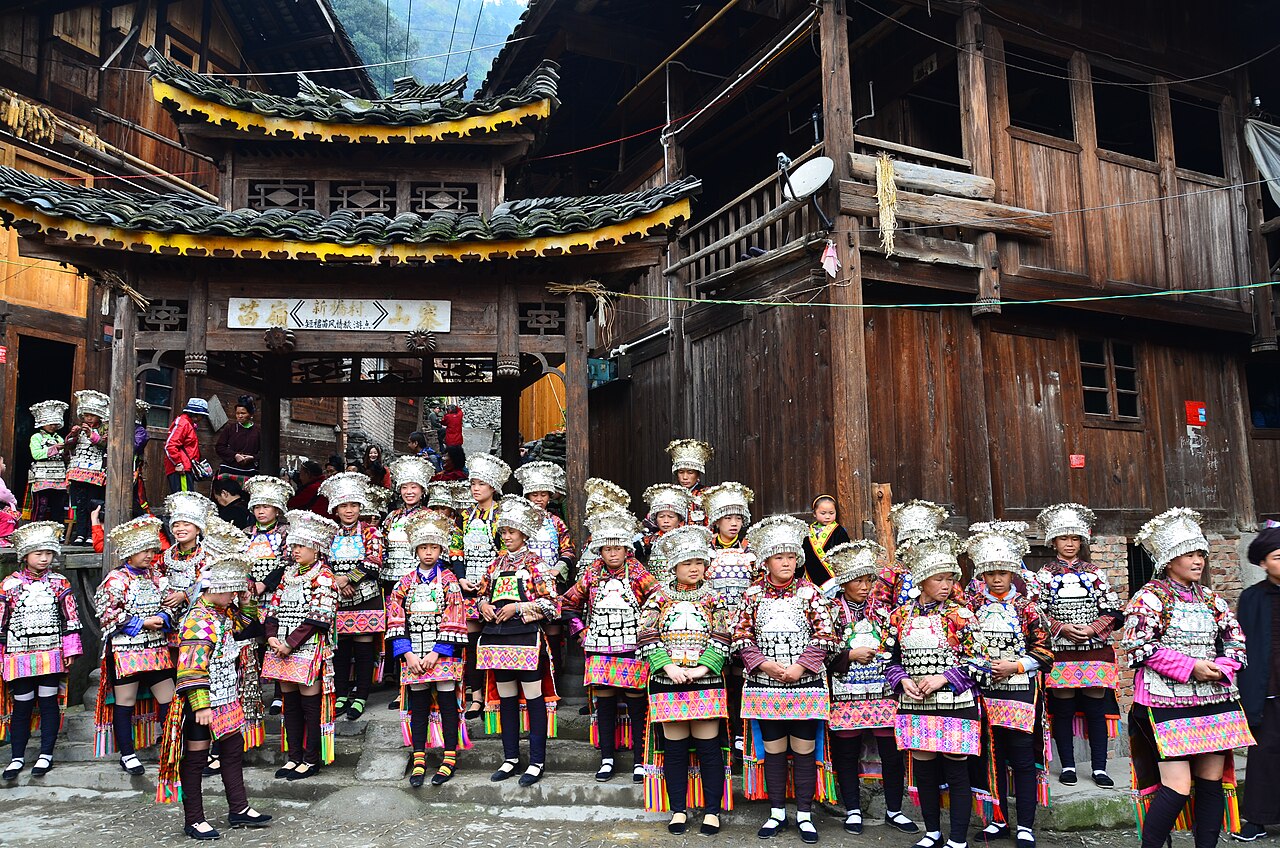
Cultural Significance:
This ancient courtship festival served as traditional marriage market where unmarried Miao men and women could meet and form relationships—crucial in societies where young people had limited social interaction opportunities. The festival centers on elaborate communication through colored glutinous rice prepared by Miao girls, with hidden items carrying romantic messages decoded by interested men.
The Rice Message Code:
- Bamboo hooks or pine needles: Invitation for further contact (positive signal)
- Toon buds or garlic sprouts: Girl is ready for marriage discussion
- Hot peppers: Clear rejection (spicy = “go away”)
- Garlic stalks: Polite decline without offense
Festival Activities:
Day 1 – Preparation & Opening Ceremonies: Miao girls prepare colored glutinous rice using natural plant dyes (red, yellow, black, purple). The preparation itself is cultural transmission—grandmothers teach granddaughters proper coloring techniques, rice cooking methods, and message encoding traditions. Opening ceremonies include community gathering, lusheng (bamboo reed instrument) performances, and traditional costume parades.
Day 2 – Main Festival Day: The core courtship activities occur. Girls distribute colored rice to men they’re interested in (or their families distributed to men their families approve). Men decode the hidden items’ meanings. Positive signals lead to antiphonal singing competitions where couples test compatibility through witty song exchanges. Bullfighting competitions happen simultaneously—massive bulls clash while crowds bet and cheer.
Day 3 – Continuation & Village Celebrations: Successful courtships continue with more singing and family introductions. Lusheng dance performances intensify. Villages host their own smaller celebrations allowing more intimate cultural observation.
The Silver Headdresses: Miao women wear extraordinary silver headdresses weighing 5-10 kilograms, crafted over months by master silversmiths. These aren’t costumes—they’re family wealth displays passed through generations, some pieces 100+ years old. A complete set (headdress, necklaces, bracelets) can cost 20,000-50,000 RMB, representing decades of family savings.
Primary Celebration Locations:
Shidong Town: Most famous location, largest scale, best infrastructure. Also most touristy and crowded. Good for first-time visitors wanting full experience with conveniences.
Laotun Village: More intimate setting 30 minutes from Shidong. Better for photographers seeking less crowded compositions and more authentic village atmosphere.
Taijiang County Seat: Administrative center hosting official events, ceremonies, and tourist-oriented performances. Less authentic but excellent facilities.
Authenticity Assessment: Level 3 (hybrid experience). Genuine courtship traditions continue in village settings while main Shidong venues increasingly cater to tourism. The authentic experiences require knowing where to look—village preparations the day before, small village celebrations versus ticketed main square events. Laotun Village offers more intimate setting with better photography opportunities and fewer tourists than Shidong.
Insider Wisdom: “The bullfighting was unexpectedly intense—real gambling, real pride, real violence when bulls clash. Not sanitized tourist show. The rice message tradition felt authentic in small villages but performed in main square. Best experience came from following my guide to her cousin’s village where we watched preparations. That’s where cultural transmission actually happens.” – French photographer, travel blog
Best for: Photographers (colorful costumes, dramatic bullfights), cultural immersion seekers, romance/courtship culture enthusiasts, travelers comfortable with crowds and commercialization mixed with authentic elements.
4.
Torch Festival (火把节) – Yi People
Time: Lunar 6th month, 24th day (typically late July)
Location: Multiple sites; best in Xichang (Sichuan) and Stone Forest near Kunming (Yunnan)
Duration: 3 days
Participating Groups: Yi, Bai, Naxi, Lahu, Hani
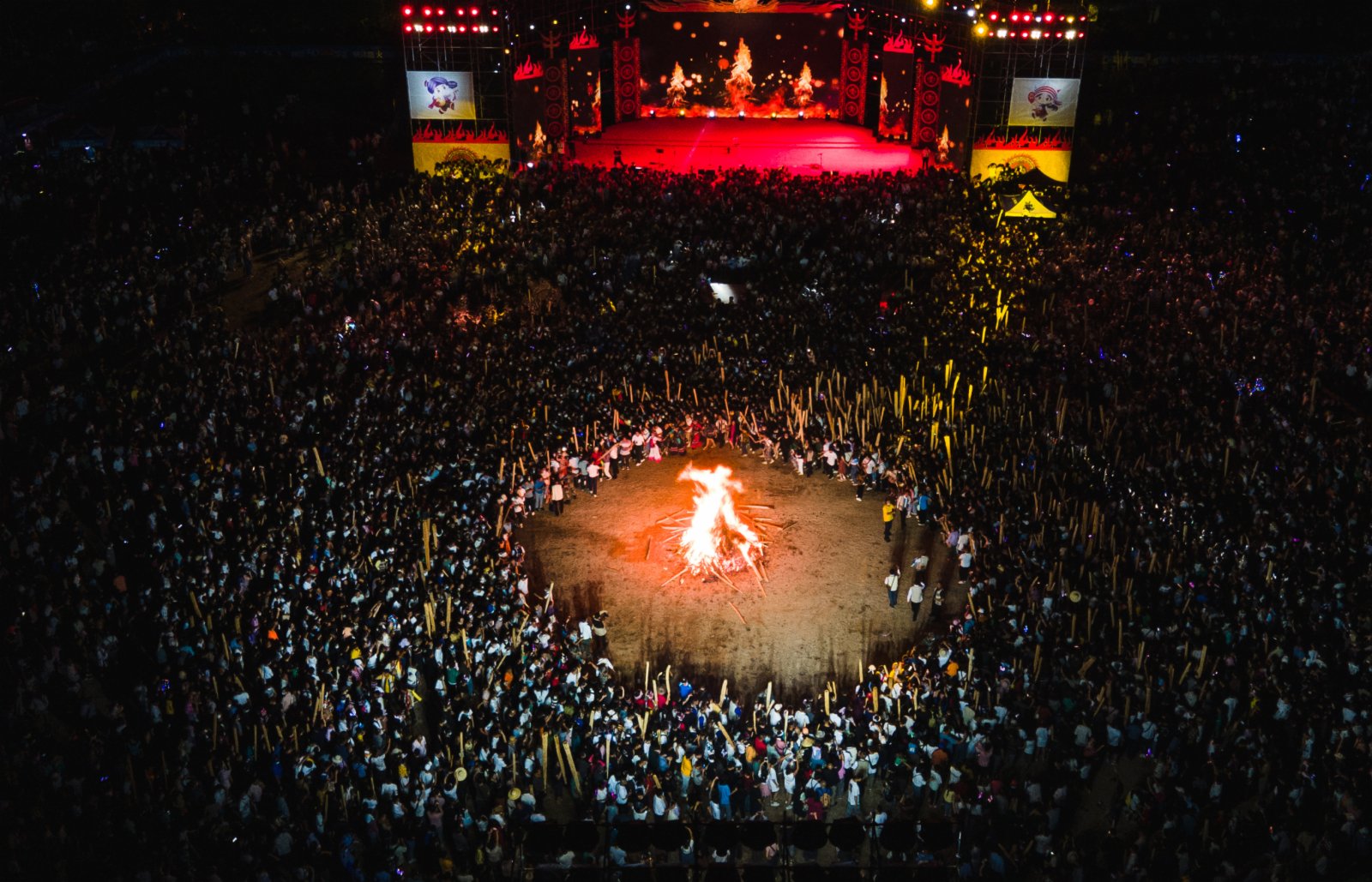
Cultural Significance:
The Yi people believe fire possesses power to repel insects, protect crops, and purify communities. The festival marks mid-summer, historically the period when agricultural pests threaten harvests. Carrying torches through fields represents ancient pest control combined with spiritual protection—practical agriculture meets religious ceremony.
Three-Day Festival Structure:
Day 1 – Torch Lighting & Welcoming Ceremonies: Families light small torches at home altars, welcoming prosperity and warding off evil spirits. Communities gather for opening ceremonies featuring traditional Yi costumes, music performances, and elder blessings. Relatively quiet day preparing for escalation ahead.
Day 2 – Competitions & Cultural Activities: Daytime features wrestling competitions (winners receive community recognition), horse racing (Yi are skilled horsemen), archery contests, and beauty pageants showcasing traditional Yi costume artistry. These aren’t tourist performances—locals compete seriously with real stakes in community status.
Day 3 – The Torch Night (Festival Climax): As sunset approaches, massive bonfires are lit in central squares and mountainside locations. Families light pine branch torches and carry them through streets, fields, and around homes. By nightfall, entire mountainsides glow with thousands of moving torches creating rivers of fire. All-night dancing around central bonfires continues until dawn, with participants jumping through flames for purification and blessing.
Best Celebration Locations Compared:
Xichang, Sichuan:
- Scale: Largest celebration, 100,000+ participants
- Infrastructure: Excellent (major city, good hotels, transportation)
- Authenticity: Level 3 (authentic core with heavy tourism accommodation)
- Advantage: Spectacular mountainside torch displays, professional organization
Stone Forest, Yunnan:
- Scale: Medium, 20,000-30,000 participants
- Infrastructure: Good (tourist area, English resources available)
- Authenticity: Level 3-4 (genuine Yi celebration, accessible location)
- Advantage: Karst landscape backdrop, easy access from Kunming (90 minutes)
Remote Yi Villages (Liangshan Prefecture):
- Scale: Small, village-level (500-2,000 people)
- Infrastructure: Minimal (basic homestays, no English)
- Authenticity: Level 5 (completely authentic, zero tourism modification)
- Advantage: Genuine cultural transmission, intimate atmosphere
- Challenge: Requires Yi-speaking guide, cultural preparation, comfort with very basic conditions
What Makes It Visually Spectacular: The festival’s crescendo builds over three days, culminating in the torch night’s extraordinary visual display. Mountainsides covered with thousands of individual torches create surreal atmosphere—like fireflies the size of humans covering entire landscapes. The combination of massive central bonfires, moving torch processions, traditional costumes illuminated by firelight, and all-night dancing creates one of China’s most photogenic festivals. Book accommodations 6-8 weeks in advance; wear natural-fiber clothing as real fire and sparks are involved.
Best for: Families (exciting but safe spectacle), night photography enthusiasts (long-exposure opportunities), travelers seeking dramatic visual experiences, anyone interested in fire festivals and pyrotechnic traditions.
5.
Miao New Year Festival (苗年) – Miao People
Time: Lunar 10th-11th month (November typically, varies by village)
Location: Leishan County, Guizhou Province (best);
also celebrated across Guizhou, Hunan, Guangxi
Duration: 5-15 days depending on village

Cultural Significance:
Miao New Year is the grandest Miao celebration, marking the end of harvest season and beginning of new agricultural cycle. Unlike Chinese New Year (based on lunar calendar start), Miao New Year follows harvest completion—practical agricultural timing takes precedence over astronomical calculations. The festival serves multiple purposes: ancestral worship, harvest thanksgiving, community renewal, and cultural transmission to younger generations.
Festival Timeline:
Pre-Festival (3-5 days before): Families conduct deep house cleaning, repair buildings, and prepare special foods. Pigs and chickens are slaughtered for festival feasts. Families worship ancestors at home altars, inviting ancestral spirits to participate in celebrations. This preparation period offers exceptional cultural observation opportunities often more valuable than festival days themselves.
Day 1 – Welcoming New Year: Families stay up late setting off fireworks to “welcome the New Year Dragon.” At midnight, ritual foods are offered to ancestors. Communities gather at dawn for opening ceremonies with village elders conducting blessings.
Days 2-3 – Main Festival Activities: Lusheng performance competitions feature bamboo reed instruments ranging from 1-meter portable sizes to 4-meter ceremonial versions requiring two people to carry. Villages compete through synchronized dancing and musical skill demonstrations. Bullfighting competitions occur simultaneously—massive bulls clash while entire communities watch and bet. Horse racing showcases riding skills important to Miao mountain culture.
Days 4-7 – Village-to-Village Visits: Miao custom involves visiting neighboring villages, strengthening inter-village relationships, and hosting elaborate banquets. Guests bring gifts (often rice wine, chickens, or money). Hosts provide multi-course meals with continuous rice wine toasting. This reciprocal visiting continues throughout festival period.
The Lusheng Instrument: Central to Miao culture, lusheng are bamboo pipes with multiple tubes producing harmonic tones. Learning to play requires years. Performance skill indicates cultural knowledge and social status. The largest ceremonial lusheng measure over 3 meters tall and weigh 10+ kilograms—carrying and playing them requires strength and coordination.
Why Each Village Celebrates Different Dates: Miao villages maintain distinct sub-ethnic identities with separate customs. Each village or village cluster determines its own Miao New Year date based on harvest completion, weather conditions, and ancestral traditions. This allows dedicated travelers to experience multiple Miao New Year celebrations across 3-4 weeks by moving between villages.
Best Locations:
Leishan County: Considered the most authentic Miao New Year celebration. Multiple villages (Langde, Paika, Xijiang periphery) celebrate on different dates throughout 11th lunar month.
Kaili Area: More accessible but increasingly commercialized. Good for first-time visitors wanting infrastructure support.
Remote Guizhou Villages: Highest authenticity but requires experienced guides, cultural preparation, and comfort with very basic conditions.
Authenticity Assessment: Level 4-5 depending on village. Remote villages maintain completely authentic celebrations (Level 5) while accessible villages like Xijiang show tourism influence (Level 3-4). The variation allows choosing authenticity versus convenience trade-off.
Why November Is Strategic: Low tourist season means 40-60% accommodation discounts versus summer. Post-harvest communities are relaxed with more time for visitor interaction. Festival authenticity remains unchanged despite fewer tourists. Comfortable weather (8-18°C) with excellent visibility makes it ideal for cultural immersion without summer crowds.
The Village-Hopping Advantage: “Attended three different village Miao New Years over two weeks. Each village had distinct customs—different songs, different foods, different costumes. My guide explained these represented different Miao sub-ethnic groups maintaining separate identities. Experiencing the variation taught more about Miao cultural diversity than any single festival could.” – Canadian anthropology student
Best for: Village-hopping enthusiasts, budget travelers (low season), cultural immersion seekers, travelers prioritizing authenticity over comfort, anyone interested in intergenerational cultural transmission.
6.
March 3rd Festival (三月三) – Zhuang People
Time: Lunar 3rd month, 3rd day (early April typically)
Location: Multiple Guangxi locations; best in Wuming County (Nanning) or Longsheng
Duration: 3 days (Guangxi provincial public holiday)
Participating Groups: Primarily Zhuang; also Yao, Miao, Dong, others

[This section already has detailed content in the “Deep Dive: Three Festivals That Exceed Expectations” section below, so I’ll create a condensed summary here]
Cultural Significance:
Ancient Shangsi Festival survival combining ancestor worship, agricultural prayers, and courtship rituals. The Zhuang preserved this Han Chinese tradition abandoned by the majority. Over 27 million people celebrate across Guangxi Province, making it China’s largest ethnic minority festival by participation.
Key Activities:
- Antiphonal singing competitions (not just romance—testing cultural knowledge)
- Five-color glutinous rice preparation and sharing
- Embroidered ball throwing competitions
- Traditional sports: firework grabbing, shoulder pole carrying, tug-of-war
- Folk performances and cultural demonstrations
Scale: The festival receives three-day provincial public holiday status, causing massive tourism across Guangxi and neighboring provinces.
Best Locations:
- Wuming County: Largest scale, best infrastructure, designated National Intangible Cultural Heritage site
- Longsheng: More authentic, spectacular rice terrace backdrop, fewer tourists
Authenticity Level: 3 (genuine traditions with heavy tourist infrastructure and government organization)
Best for: Large-scale festival enthusiasts, accessible first-time experiences, travelers interested in antiphonal singing traditions, those seeking well-organized events with good infrastructure.
7.
Lusheng Festival (芦笙节) – Miao People
Time: Multiple dates—Spring Festival (lunar 2nd month)
and Autumn Festival (lunar 10th month, 27th-29th days)
Location: Kaili area, Guizhou Province;
specific sites: Zhouxi Town (spring), Gulong Village (autumn)
Duration: 3 days
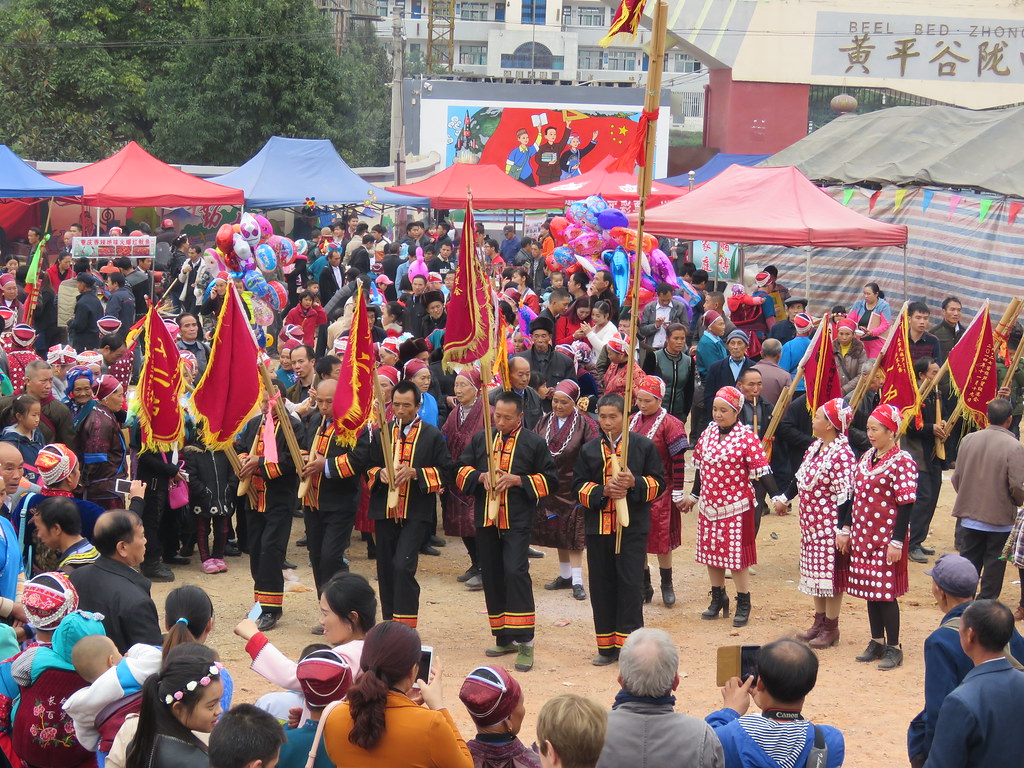
Cultural Significance:
The lusheng bamboo reed instrument defines Miao musical culture. The festival celebrates this instrument through competitions, performances, and synchronized dancing involving thousands of participants. It’s simultaneously religious ceremony, cultural competition, marriage market, and community gathering.
Festival Components:
Lusheng Competitions: Multiple categories based on instrument size, performance style, and performer age. Judges evaluate musical skill, dance coordination, and costume presentation. Winners receive community recognition—status in Miao society correlates with cultural competency, not wealth.
Mass Synchronized Dancing: The festival’s visual centerpiece: Hundreds of lusheng players in concentric circles performing coordinated dance movements while playing complex harmonies. Some circles have performers playing 3-meter-tall lusheng requiring two people to carry. The coordination required—simultaneous music and dance across hundreds of participants without conductor—demonstrates cultural unity and practiced skill.
Costume Display: Miao women wear elaborate silver headdresses, embroidered clothing, and full jewelry sets representing family wealth and artistic traditions. A complete costume can weigh 10+ kilograms, mostly in silver ornaments.
Spring vs Autumn Festivals:
Spring Lusheng (Zhouxi Town, February):
- Scale: Massive (30,000+ participants)
- Purpose: Pre-planting celebration, courtship opportunities for young people
- Atmosphere: Energetic, romantic, large tourist presence
- Access: Easy from Kaili (16 km, regular buses)
Autumn Lusheng (Gulong Village, October-November):
- Scale: Medium (5,000-10,000 participants)
- Purpose: Post-harvest thanksgiving, community renewal
- Atmosphere: More relaxed, authentic, fewer tourists
- Access: Moderate (requires guide arrangement)
Authenticity Assessment: Spring festival: Level 3 (authentic traditions, heavy tourism) Autumn festival: Level 4 (primarily local participation, genuine celebration)
Practical Planning:
Photography Opportunities: Sunrise costume preparation (arrive villages by 6:30 AM), mass synchronized dancing (wide-angle lenses essential), silver headdress closeups (ask permission), lusheng instrument details, bullfighting and horse racing side events.
Best Strategy: Attend both spring and autumn festivals if possible. Spring provides spectacle and scale; autumn delivers authenticity and intimacy. The combination reveals how tourism changes festival dynamics.
Best for: Music enthusiasts, costume photography lovers, travelers interested in synchronized cultural performances, those seeking large-scale minority festivals with good accessibility.
8.
Corban Festival (古尔邦节) – Muslim Minorities
Time: Islamic lunar 12th month, 10th day (typically June on Gregorian calendar)
Location: Xinjiang Uygur Autonomous Region,
Ningxia Hui Autonomous Region, Gansu Province
Duration: 3-4 days
Participating Groups: Hui, Uygur, Kazak, Uzbek, Tajik,
Tatar, Kirgiz, Salar, Dongxiang, Bonan (10 ethnic groups)

Cultural Significance:
Known as Eid al-Adha in Arabic, Corban commemorates Abraham’s willingness to sacrifice his son in obedience to God. It’s one of Islam’s two most important religious celebrations, marking the conclusion of Hajj pilgrimage. For China’s Muslim minorities, it serves as major religious observance, family reunion occasion, and community solidarity demonstration.
Festival Activities:
Morning Prayers: Men gather at mosques for special Eid prayers beginning around 7:00-8:00 AM. Women typically pray at home. The prayers include specific Eid sermons and communal supplications.
Livestock Sacrifice: Following prayers, families sacrifice sheep, cattle, or camels according to Islamic guidelines. The meat is divided into three portions—one for family, one for relatives and friends, one for the poor and needy. This charitable distribution is religious obligation, not optional.
Ethnic-Specific Celebrations:
- Uygur communities: Singing and dancing assemblies, elaborate feasts with polo (pilaf), roasted lamb, naan bread
- Kazak and Kirgiz groups: Horse racing competitions, traditional wrestling (Kuresh), eagle hunting demonstrations
- Hui communities: More subdued celebrations focusing on family gatherings and mosque activities
Best Locations:
Kashgar, Xinjiang: Largest and most vibrant celebration. Id Kah Mosque hosts 10,000+ worshippers. The old city transforms with festive atmosphere, traditional music, and street celebrations.
Yinchuan, Ningxia: Hui Muslim center with authentic celebrations and easier access for travelers. Less exotic than Xinjiang but more accessible and comfortable infrastructure.
Linxia, Gansu: Known as “Little Mecca of China,” hosting significant Hui and Dongxiang Muslim populations with traditional celebration styles.
Authenticity Level: 4-5 (genuine religious observance, tourism doesn’t alter core ceremonies)
Cultural Etiquette:
- Dress modestly (covered shoulders, knees, arms; women should bring headscarves for mosque areas)
- No alcohol consumption or presence during festival period
- Photography requires explicit permission, especially at mosques and during prayers
- Left hand considered unclean—don’t eat, give, or receive with left hand only
- Non-Muslims generally not permitted inside mosques during prayer times
- Pork products strictly prohibited—carefully check all food ingredients
Travel Considerations: Many restaurants and shops close for 2-3 days during Corban. Plan meals and shopping accordingly. Public transportation operates on reduced schedules. Hotels in Muslim areas book quickly as families travel for reunions—reserve 4-6 weeks in advance.
Best for: Islamic culture enthusiasts, travelers interested in religious festivals, Xinjiang/Silk Road explorers, those seeking authentic religious observance rather than performance-based festivals.
Quick Reference Comparison Table
Festival | Best Authenticity | Best Infrastructure | Best for First-Timers | Most Photogenic | Requires Permits |
|---|---|---|---|---|---|
Water Splashing | Villages outside Jinghong | Excellent | ✓ Yes | High (action & color) | No |
Shoton | Drepung Monastery | Good | Moderate | Very High (Thangka) | Yes (Tibet) |
Sisters’ Meal | Laotun village | Moderate | ✓ Yes | Very High (costumes) | No |
Torch Festival | Remote Yi villages | Good (Stone Forest) | ✓ Yes | Very High (fire & night) | No |
Miao New Year | Remote Leishan villages | Basic | No | High (costumes) | No |
March 3rd | Longsheng area | Excellent (Wuming) | ✓ Yes | Moderate | No |
Lusheng | Gulong (autumn) | Moderate | Moderate | High (costumes & dance) | No |
Corban | Kashgar old city | Moderate | No | Moderate | No (special considerations) |
Monthly Festival Planning Calendar
Smart travelers plan trips around multiple festivals or combine festivals with regional attractions. This calendar shows the best months for festival tourism across China.
Month | Primary Festivals | Ethnic Groups | Provinces | Weather & Travel Notes |
|---|---|---|---|---|
January-February | Tibetan New Year (Losar), Spring Lusheng Festival | Tibetan, Miao | Tibet, Guizhou | Tibet: Clear skies, -5°C to 10°C, fewer tourists, winter discounts. Guizhou: 8-18°C, pleasant. |
March-April | March 3rd Festival, Sisters’ Meal Festival, Water Splashing Festival | Zhuang, Miao, Dai | Guangxi, Guizhou, Yunnan | Peak season begins. Perfect weather 15-28°C. Book 2-3 months advance. Multiple festival options. |
May-June | Dragon Canoe Festival, Corban Festival | Miao, Muslim groups | Guizhou, Xinjiang | Guizhou: Post-spring bloom, possible rain. Xinjiang: Warm & dry. Ramadan considerations for Muslim festivals. |
July-August | Torch Festival, Shoton Festival | Yi, Tibetan | Sichuan/Yunnan, Tibet | Summer peak. Yi areas 18-28°C. Lhasa 10-25°C with intense UV. Book Lhasa 3+ months advance. |
September-October | Autumn Lusheng Festival, Harvest festivals | Miao, Various | Guizhou, Yunnan | Golden autumn colors 12-22°C. Excellent visibility, lower tourist volumes. Best photography season. |
November | Miao New Year Festival | Miao | Guizhou | Low season: 40-60% accommodation discounts. Village-hopping opportunities. Cool 8-18°C. |
December | Dong New Year, Winter festivals | Dong, Various | Guizhou | Off-season travel. Authentic village experiences, minimal tourists. Cold but clear. |
Peak Season Reality: April and August see highest tourist volumes and prices. November-December offer authentic experiences with significantly lower costs and crowds.
The Authenticity Spectrum: Understanding What You’re Actually Experiencing
Not all festivals deliver the same level of cultural authenticity. We’ve developed a five-level framework after evaluating hundreds of festival experiences.
The 5 Authenticity Levels
Level 5 – Completely Authentic: Villages celebrating ancestral rituals regardless of tourist presence. Ceremonies conducted in minority languages. Zero commercial infrastructure. Example: Remote Dong New Year in mountain villages, Tiaohua Festival in Suoga Village.
Level 4 – Authentic Core with Tourist Accommodation: Real celebrations with some infrastructure adjustments. Locals still dominate attendance. Ceremonies unchanged but viewing areas designated. Example: Leishan Miao New Year, rural Torch Festival celebrations.
Level 3 – Hybrid Experience: Genuine traditions performed alongside tourist-oriented additions. Multiple venues—some authentic, some staged. Requires research to find authentic parts. Example: Sisters’ Meal Festival in Shidong, March 3rd Festival in Wuming.
Level 2 – Performance-Heavy: Original ceremonies compressed for tourism schedules. Professional performers outnumber village participants. Example: Water Splashing Festival main square events, commercialized Lusheng performances.
Level 1 – Pure Tourism Product: Year-round shows branded as “festivals.” No connection to actual minority calendars or authentic practices. We don’t include these in our recommendations.
How to Find Authentic Experiences Within Commercialized Festivals
Even heavily commercialized festivals contain authentic elements if you know where to look.
Water Splashing Festival Strategy:
- Skip: Main square organized water battles (Level 2)
- Attend: 6:00 AM temple ceremonies (Level 5)
- Seek: Village preparations two days before festival (Level 4)
- Watch: Dragon boat races between rival villages (Level 4)
Sisters’ Meal Festival Strategy:
- Skip: Ticketed performance areas with bleacher seating (Level 2)
- Attend: Village courtyard preparations where girls cook colored rice (Level 5)
- Seek: Small village celebrations in Laotun vs. large Shidong events (Level 4 vs. 3)
- Participate: Bullfighting competitions where real gambling happens (Level 4)
General Principle: Arrive 1-2 days early. Observe preparations. Ask guides to facilitate village access rather than tourist venue attendance. The more effort required to reach it, the more authentic it remains.
Deep Dive: Three Festivals That Exceed Expectations
While the eight premier festivals above provide solid starting points, these three lesser-known celebrations deliver disproportionate cultural value.
Tiaohua Festival (跳花节) – Longhorn Miao Specialty
Time: Lunar 1st month, 10th day (February typically)
Location: Suoga Village, Liuzhi District, Guizhou (4 hours from Guiyang)
Authenticity Level: 5 (completely authentic)

China’s only remaining Longhorn Miao village celebrates this ancient courtship festival. Longhorn Miao women wear extraordinary headdresses—actual ox horns wrapped in their ancestors’ hair and wool, towering 60cm high. This isn’t costume; it’s clan identity passed through maternal lines for generations.
Festival Activities: During Tiaohua, unmarried women climb “flower mountains” (decorated poles) while men compete in courtship songs below. The songs aren’t simple love ballads—they’re sophisticated poetry encoding agricultural knowledge, clan history, and cultural values. Winners receive recognition, not prizes. Status derives from cultural knowledge, not performance skill.
Why It’s Special: Zero English resources exist. Zero tourist infrastructure. No staged performances. The Longhorn Miao celebrate whether outsiders attend or not. You’re witnessing genuine cultural transmission—grandmothers teaching granddaughters headdress construction techniques, fathers instructing sons in proper courtship song protocols.
Practical Reality:
- Accommodation: Village homestays only (250 RMB/night including meals)
- Language: Mandarin essential; Miao language dominates
- Cash: No ATMs; bring sufficient cash
- Comfort level: Very basic (squat toilets, limited hot water)
Traveler Feedback: “Complete culture shock. We were the only foreigners among 2,000+ Longhorn Miao. My guide translated everything—the songs were sophisticated poetry about agricultural techniques passed through generations. Nothing like simplified ‘love song’ narratives in guidebooks. Uncomfortable but unforgettable.” – German traveler, Xiaohongshu review
Dong New Year – The Polyphonic Singing Masterclass
Time: Lunar 11th month (December typically)
Location: Zhaoxing Dong Village, Guizhou
Authenticity Level: 4

Dong New Year centers on “Dousha”—ancestor worship through collective singing. The “Grand Song of the Dong” (侗族大歌), a UNESCO-protected polyphonic vocal tradition, isn’t performed. It’s lived.
What Happens: Villages divide into singing groups. Women’s choirs alternate with men’s groups, children’s sections respond to elders. Zero instruments. Zero conductor. Pure vocal harmony developed over centuries, with natural reverb created by Dong drum tower architecture.
The songs aren’t entertainment. They encode village history, legal precedents, moral lessons, and agricultural wisdom. When elders sing about “water sharing rules,” they’re transmitting centuries of irrigation management knowledge. When youth respond, they’re demonstrating cultural competency required for community membership.
Why Guidebooks Ignore It: December timing coincides with few other China attractions. Remote location requires dedicated travel. No dramatic visual spectacle—it’s primarily auditory experience. Western travelers accustomed to visual festivals find it challenging to appreciate initially.
The Experience: Three-hour ceremonies feel like 30 minutes. The polyphonic harmonies—multiple independent melodic lines sung simultaneously without instruments—create transcendent atmosphere. Anthropologists call it “living fossil” of ancient Chinese musical traditions.
Practical Planning:
- Accommodation: Zhaoxing has decent guesthouses (150-200 RMB/night)
- Access: High-speed rail to Congjiang, then 1-hour bus to Zhaoxing
- Guide value: Exponentially increases appreciation—worth the investment
- Photography: Limited (indoor ceremonies, low light, respectful distance required)
Traveler Perspective: “I came expecting Guizhou’s famous visual minority culture—silver headdresses, colorful costumes. Instead experienced something more profound—entire villages communicating through song. My guide explained the songs encoded village legal decisions from centuries ago. It’s living oral history functioning as community governance.” – Australian educator, travel forum
Zhuang March 3rd Festival – Beyond the Romance Narrative
Time: Lunar 3rd month, 3rd day (early April typically)
Location: Multiple Guangxi locations; best in Wuming County (Nanning) or Longsheng
Authenticity Level: 3 (hybrid—authentic traditions with heavy tourist infrastructure)
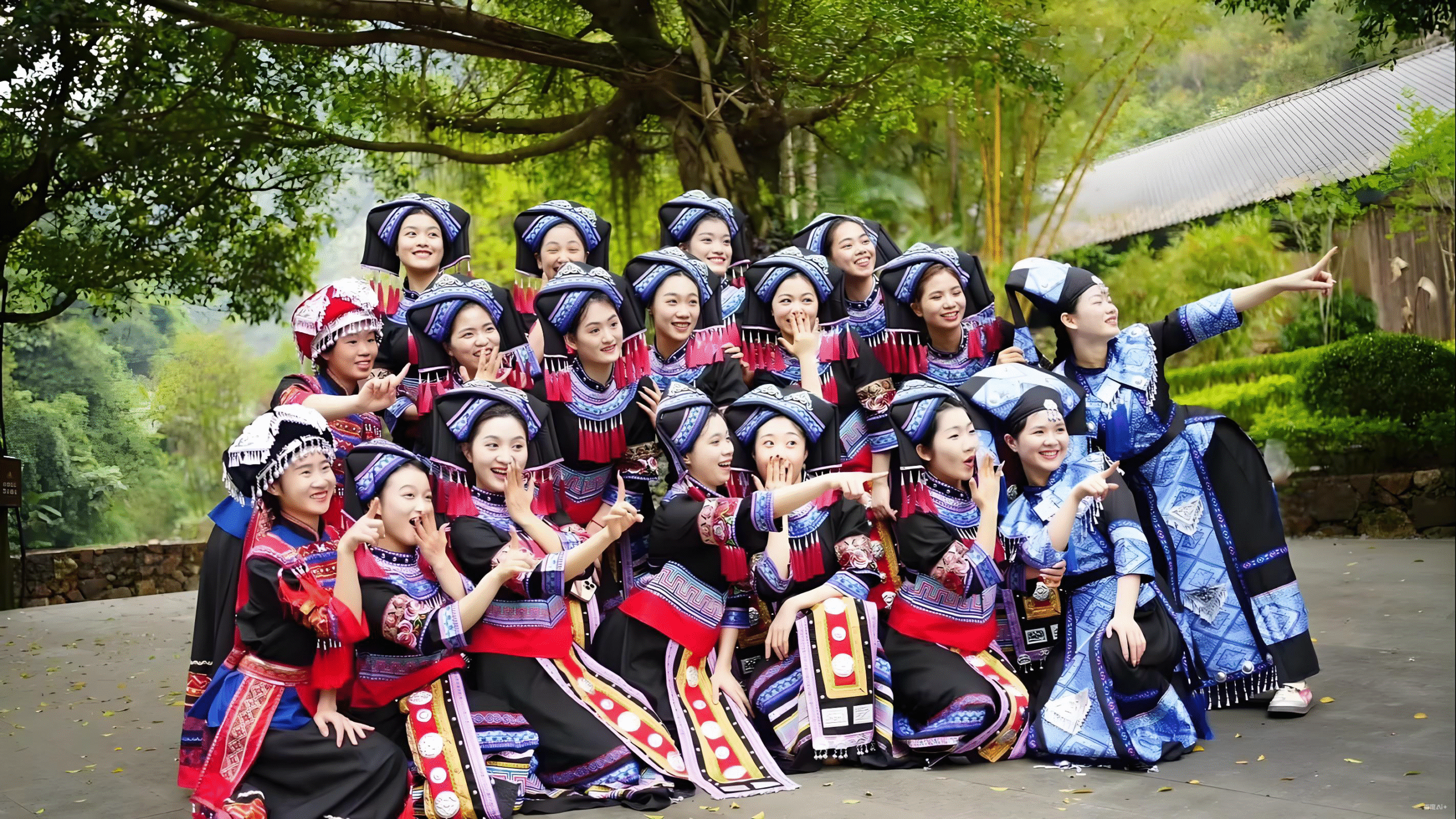
Most English content frames March 3rd as “Zhuang Valentine’s Day.” This oversimplification misses the festival’s actual significance and disappoints travelers seeking cultural depth.
What It Actually Is: Shangsi Festival survival—an ancient Chinese purification ritual the Zhuang preserved when Han majority abandoned it centuries ago. It combines ancestor worship, agricultural prayers, courtship rituals, and community renewal ceremonies. Romance is one element among many.
The Scale Tourism Boards Don’t Emphasize: Over 27 million people across Guangxi celebrate March 3rd Festival yearly. This isn’t a village festival—it’s regional cultural mobilization spanning five provinces (Guangxi, Guizhou, Guangdong, Yunnan, Hunan). Guangxi government designates it a three-day public holiday.
Festival Components:
Antiphonal Singing (对歌): The element marketed as romance actually demonstrates cultural competency. Young people don’t randomly sing—they compete in three distinct categories:
- Love songs (情歌): Initial attraction phase
- Cross-questioned songs (盘歌): Testing intelligence, cultural knowledge, family background
- Ancient songs (古歌): Demonstrating family lineage, education, historical knowledge
Preparation takes months. Participants memorize thousands of song verses, study clan history, and learn proper response protocols. It’s intellectual courtship requiring deep cultural mastery.
Five-Color Glutinous Rice (五色糯米饭): Not just colorful food. Each color carries meaning and uses specific plant-based natural dyes:
- Black (earth, fertility): Peristrophe roxburghiana leaves
- Red (success, prosperity): Koali leaves
- Yellow (harvest abundance): Huanghua grass
- Purple (good fortune): Purple koali vine
- White (purity, honesty): Undyed rice
Families prepare this together, with elders teaching younger generations the proper techniques, gathering timing, and symbolic meanings.
Best Locations Compared:
Wuming County (Nanning):
- Scale: Massive (over 30 organized activities)
- Infrastructure: Excellent (hotels, English signs, tourist services)
- Authenticity: Level 3 (real traditions, heavy tourist accommodation)
- Advantage: Accessible, well-organized, first-timer friendly
- Designated National Intangible Cultural Heritage site since 2014
Longsheng Rice Terraces Area:
- Scale: Medium (village-level celebrations)
- Infrastructure: Moderate (homestays, limited English)
- Authenticity: Level 4 (primarily local participation, fewer tourists)
- Advantage: Spectacular natural backdrop, more intimate atmosphere
- Better for photographers seeking authentic village life
Practical Considerations:
The three-day public holiday causes significant tourism pressure. Accommodation prices increase 40-60% across Guangxi and neighboring provinces. Book 2 months in advance or stay in Nanning city (1 hour from Wuming) for better availability.
Traveler Reality Check: “Expected romantic singing festival based on blog descriptions. Got agricultural community celebration with courtship as subplot. Not disappointing—actually more interesting. Watching elderly Zhuang explain rice cultivation songs revealed more about sustainable farming than any documentary. The romance angle is tourist marketing; the real story is cultural preservation.” – Canadian teacher, travel review
Regional Deep Dive: The Festivals Tourism Articles Misrepresent
Yunnan’s Water Splashing Festival – Managing Expectations vs Reality

Water Splashing Festival generates polarized reviews. Some travelers call it “life-changing cultural immersion.” Others complain about “commercialized water fight with ethnic costumes.”
The difference? Understanding which parts remain authentic and which exist for tourism.
Authentic Elements:
Temple worship (Day 1): Early morning ceremonies at Wat Pajie and other Buddhist temples. Dai families bring offerings, monks conduct rituals. Tourists present but not the focus. Start time: 6:00 AM (most tourists skip this).
Traditional competitions: Dragon boat races on Lancang River feature village teams training year-round. These aren’t exhibitions—villages maintain centuries-old rivalries. Betting happens. Pride is at stake.
Evening lantern releases: Families gather at river’s edge for private ceremonies. Not organized tourist events. You’re witnessing, not participating (unless invited by local families).
Tourism-Created Elements:
Main square water battles: Designated splashing zones with music, organized start times, vendor stalls. Fun but purely tourist entertainment. Locals avoid these areas.
Costume rental operations: Professional photographers offer “traditional Dai costume experiences.” Nothing authentic about this—pure tourist service.
“Traditional village visits”: Some tour packages include villages that now primarily serve tourism. Residents perform daily activities on schedule.
How to Experience Both:
- Morning: Temple ceremonies (authentic)
- Midday: Dragon boat races (authentic with tourist presence)
- Afternoon: Main square water battle (pure tourism fun—embrace it)
- Evening: Find local family celebrations (requires guide connections)
The Number Tourism Boards Tout: The 2025 Water Splashing Festival attracted 2.2 million tourists, generating 2.665 billion yuan in tourism revenue in Xishuangbanna.
What That Number Means for Travelers: Massive crowds. Infrastructure strained. Hotel rooms scarce. Transportation challenging. Premium prices.
Traveler Wisdom: “Arrived two days early. Watched preparations—women cooking traditional foods, men repairing dragon boats, families cleaning temple grounds. The festival itself was fun but chaotic. Those two prep days provided cultural context the actual festival couldn’t.” – Singapore traveler, TripAdvisor review
Tibet’s Shoton Festival – The Permit and Altitude Reality

English guidebooks present Shoton as “accessible cultural experience.” The reality involves bureaucratic navigation and physical challenges many underestimate.
The Permit Situation Tourism Rarely Explains:
Tibet requires Foreign Tourist Permits for all international visitors. Unlike minority regions in Guizhou or Yunnan, independent travel is prohibited. You must:
- Book through registered Tibet tour company (15-20 days processing time)
- Purchase package including guide, vehicle, and accommodation
- Follow approved itinerary—route changes mid-trip are difficult
- Pay premium prices (no budget Tibet festival tours exist)
The Altitude Challenge Tourists Minimize:
Lhasa sits at 3,650 meters elevation. Oxygen levels are 40% lower than sea level. This isn’t theoretical—it affects everyone, regardless of fitness level.
Altitude Sickness Phases:
- Days 1-2: Headache, difficulty sleeping, mild nausea (affects 75% of visitors)
- Days 3-4: Symptoms peak or begin subsiding (critical period)
- Days 5+: Most acclimate sufficiently for festival activities
Shoton Festival Problem: The dramatic Thangka unveiling happens Day 1. Travelers often arrive in Lhasa the day before, wake early for the ceremony, and push through mild altitude sickness to attend.
Medical Reality: Festival-related hospitalizations occur annually. Usually tourists who overexerted while under-acclimated.
Smart Festival Strategy:
Arrive in Lhasa 3-4 days before Shoton begins. Use these days for low-intensity acclimatization:
- Day 1: Rest, light walking only
- Day 2: Jokhang Temple visit (low altitude, indoor)
- Day 3: Sera Monastery (moderate activity)
- Day 4: Potala Palace (good acclimatization test)
By Shoton’s opening, your body handles the 5:30 AM wake-up for Drepung Monastery’s Thangka unveiling.
The Thangka Unveiling Intelligence:
The Shoton Festival Thangka portrays Qamba Buddha, measuring 42 meters long by 38 meters wide, unveiled on Drepung Monastery mountainside.
What Guides Won’t Tell You:
The ceremony starts at 8:00 AM officially. Serious photographers and cultural observers arrive by 6:00 AM to secure positions. By 7:30 AM, viewing areas are packed.
The Thangka remains visible for approximately 2 hours before being ceremonially stored for another year. Pilgrims throw white khatas (silk scarves) toward the image—hundreds of scarves flying simultaneously creates emotional, chaotic atmosphere.
Traveler Perspective: “My guide said 7:30 AM arrival was fine. We couldn’t get within 50 meters of good viewing positions. Next year I’d arrive at 6:00 AM minimum, bringing folding stool and warm clothing—August mornings at this altitude are cold.” – UK photographer, travel blog
Norbulingka Park Reality:
Days 2-7 feature Tibetan opera performances in Norbulingka Palace gardens. This is where Shoton excels at cultural immersion.
Local Tibetan families spread blankets, unpack elaborate picnics, and settle in for day-long opera watching. The performances run 11:00 AM to sunset—6+ hours of traditional Tibetan theater.
Opera Viewing Strategy:
Don’t try watching entire performances unless you’re Tibetan opera scholar. Instead, float between opera stages and picnicking families. Observe social dynamics, costume details, family interactions.
Bring offerings to share (fruit, sweets). Tibetan families may invite you to their picnic blankets. Accept—it’s genuine cultural exchange opportunity.
What Makes Shoton Worth the Complexity:
The festival’s spiritual atmosphere is unmatched. When that 42-meter Thangka unfurls while thousands of pilgrims pray simultaneously, skeptics report feeling moved. The combination of visual spectacle, religious devotion, high-altitude clarity, and Himalayan backdrop creates powerful experiences.
Minority Festival Patterns Tourism Boards Conceal
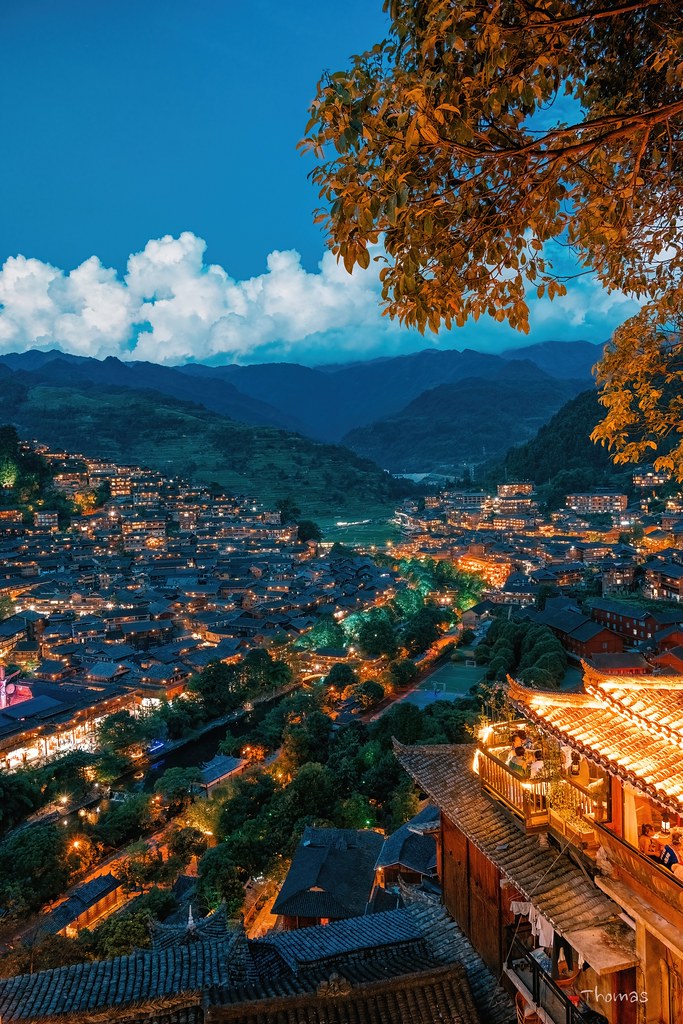
The Commercialization Gradient
We track commercialization levels annually. The pattern is consistent and predictable:
- Year 1-3 of International Promotion: Festival maintains authenticity. Infrastructure remains basic. Locals outnumber tourists significantly. Prices reflect local economy.
- Year 4-6: Tourism increases. Basic infrastructure appears (English signs, ATMs, clean toilets). Some ceremony timing adjusts for tourist convenience. Vendors target tourist spending.
- Year 7-10: Major commercialization. “Festival zones” separate from authentic ceremonies. Professional performers supplement village participants. Prices reflect tourist market, not local economy.
- Year 10+: Festival splits into two versions: tourist performance (year-round or extended festival dates) and local celebration (maintains original date, locals only, happens away from tourist zones).
Current Status Examples:
- Water Splashing Festival: Year 15+ (highly commercialized, authentic core survives in villages)
- Sisters’ Meal Festival: Year 8 (transitioning, still authentic with growing tourism infrastructure)
- Tiaohua Festival: Year 1 (minimal tourism, maximum authenticity, zero convenience)
The “Festival Fatigue” Phenomenon
Communities hosting successful festivals experience predictable challenges. Understanding this helps travelers make ethical choices.
Economic Benefits vs Cultural Costs:
Tourism brings income. Young people return to villages seeing economic opportunity in cultural preservation. This is positive.
Simultaneously, festival preparations shift from cultural transmission to tourist entertainment. Grandmothers who once taught embroidery now sell completed pieces. This is complex.
Traveler’s Role:
You’re not neutral observer. Your presence and spending shape these festivals’ futures. Ways to minimize negative impact:
- Arrive before and stay after main festival days: Witness preparations and recovery phases. This values ordinary life, not just spectacle.
- Hire local guides, not outside tour companies: Money flows to community members, not coastal city operators.
- Purchase handicrafts directly from makers: Ask to watch creation process. Pay fair prices without aggressive bargaining.
- Request unscheduled experiences: Tell guides you prefer village life over performances. Informed guides can arrange this.
- Learn basic minority language phrases: Even failed attempts signal respect. Young community members appreciate foreigners attempting their languages.
The Booking Intelligence Other Guides Won’t Share

Why “Festival Date Flexibility” Is Myth
Tourism companies advertise “flexible festival tours.” This sounds appealing until you understand lunar calendar realities.
Minority festivals follow lunar calendars. Dates shift annually on Gregorian calendar but remain fixed on lunar calendar. The festival happens when it happens—flexibility doesn’t exist.
The Solar-Lunar Conversion Problem:
Gregorian calendar year = 365.25 days Lunar calendar year = 354 days (short 11 days)
To compensate, Chinese lunar calendar adds “leap months” every 2-3 years. This makes multi-year planning difficult.
Booking Strategy:
- Choose festival first, dates second: Decide which minority festival interests you. Research its lunar calendar date.
- Check Chinese lunar calendar conversion: Multiple years in advance, note festival’s Gregorian date range.
- Book with explicit lunar date confirmation: Require tour operator to confirm exact lunar date, not estimated Gregorian dates.
- Build 3-5 day buffer: Book surrounding days too. If festival shifts slightly, you’re covered.
The Accommodation Scarcity Reality
Popular festivals create extreme accommodation shortages. Understanding the scarcity pattern helps planning.
Leishan Miao New Year Example:
Leishan County population: 160,000 Hotel rooms in Leishan: Approximately 1,200 Festival attendance: 40,000-60,000 people
Math doesn’t work. Where do visitors sleep?
Local Solution: Village homestays absorb overflow. Rural households open spare rooms. This works for domestic tourists with language ability and cultural familiarity. Foreign tourists struggle with this system.
Foreign Traveler Options:
Option 1: Stay in Kaili (45 minutes from Leishan). Hotel rooms more available, English-speaking staff possible. Daily transportation to festival village.
Option 2: Book Leishan hotels 3-4 months advance through Chinese hotel apps (Ctrip, Meituan). Expect 2-3x normal prices during festival.
Option 3: Hire tour company handling all logistics. Premium prices but guaranteed accommodation and transportation.
Option 4: Skip peak festival days, attend peripheral celebrations in nearby villages. Many villages celebrate 2-3 days before/after main festival date with fewer tourists.
The Guide Selection Framework
Quality guides transform festival experiences. Poor guides waste time and money. Our guide selection framework:
Red Flags:
- Guides who primarily speak about themselves, not minority cultures
- Itineraries focusing on photo opportunities over cultural explanation
- Promises to “get you special access” (usually bribes that exploit communities)
- Inability to answer specific questions about festival meanings
- English much stronger than minority cultural knowledge
Green Flags:
- Guides from minority communities or with decade+ experience in minority regions
- Willingness to adjust itinerary based on your learning interests
- Connections allowing genuine village interactions, not tourist performances
- Specific knowledge about ceremony protocols, taboos, appropriate behavior
- Realistic expectations-setting (admits when experiences may disappoint)
Advanced Festival Selection: Matching Travelers to Experiences
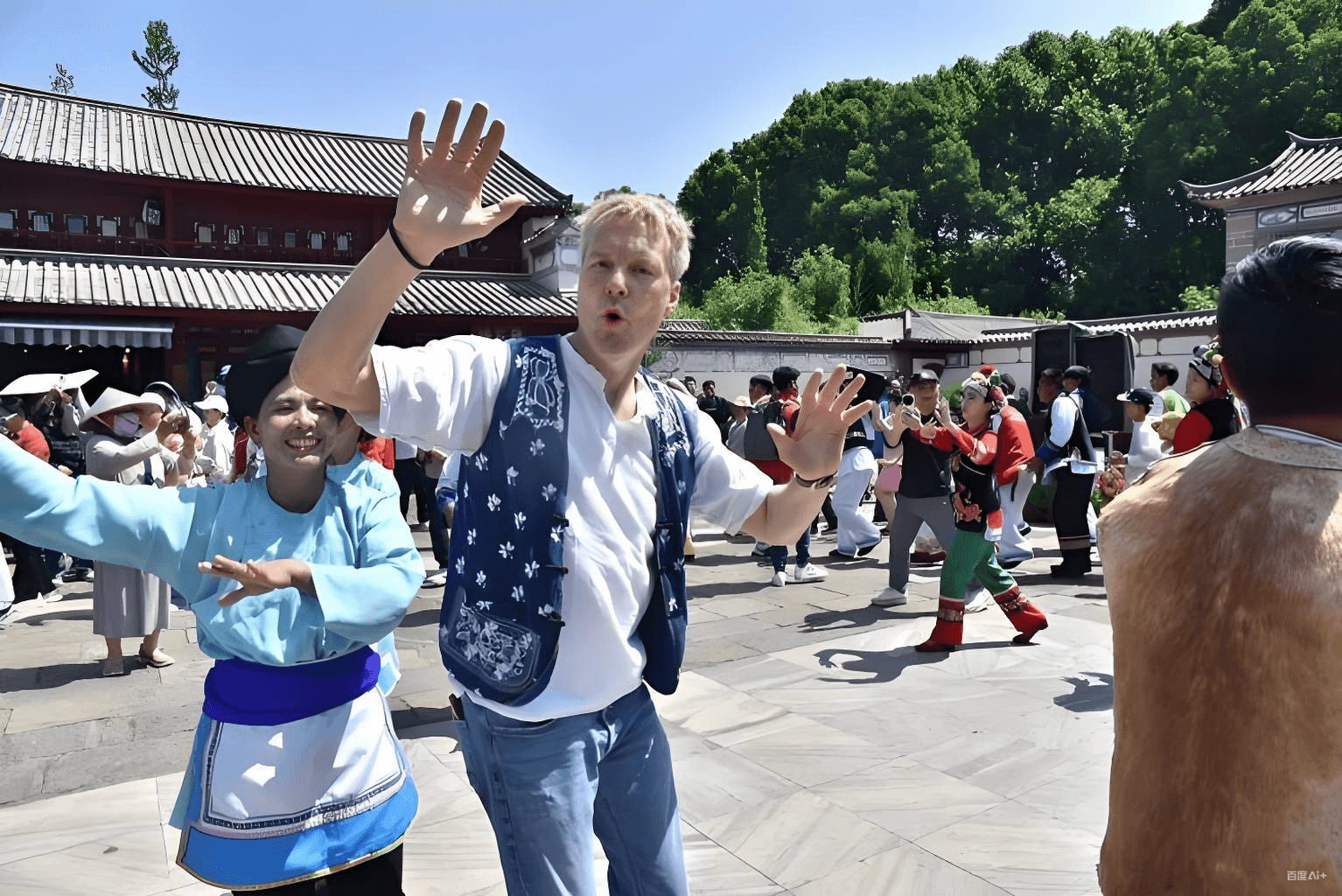
Not all festivals suit all travelers. Our matching framework:
For First-Time Minority Culture Visitors
Recommended:
- Water Splashing Festival (clear concept, immediate participation)
- Zhuang March 3rd Festival (large scale, good infrastructure, multiple activities)
Avoid:
- Remote Dong/Miao village festivals requiring extensive cultural context
- Tibet festivals requiring altitude acclimatization and bureaucratic navigation
For Photographers
Recommended:
- Shoton Festival (dramatic Thangka unveiling, colorful opera costumes)
- Sisters’ Meal Festival (elaborate silver headdresses, vibrant colors)
- Lusheng Festival (large-scale performances, good lighting)
Avoid:
- Interior ceremonies prohibiting photography
- Nighttime festivals with limited light and movement restrictions
For Cultural Scholars
Recommended:
- Dong New Year (witnessing oral history transmission through song)
- Tiaohua Festival (rare Longhorn Miao traditions)
- Miao New Year in remote Leishan villages (unmodified ancestral practices)
Avoid:
- Highly commercialized festivals where performances replace authentic practices
- Large-scale tourism events with thin cultural content
For Family Travelers
Recommended:
- Water Splashing Festival (children love the water component)
- Torch Festival (safe nighttime spectacle, family-friendly activities)
Avoid:
- Tibet festivals (altitude challenges for children)
- Multi-day village festivals lacking child-friendly facilities
The Festivals We Recommend Against
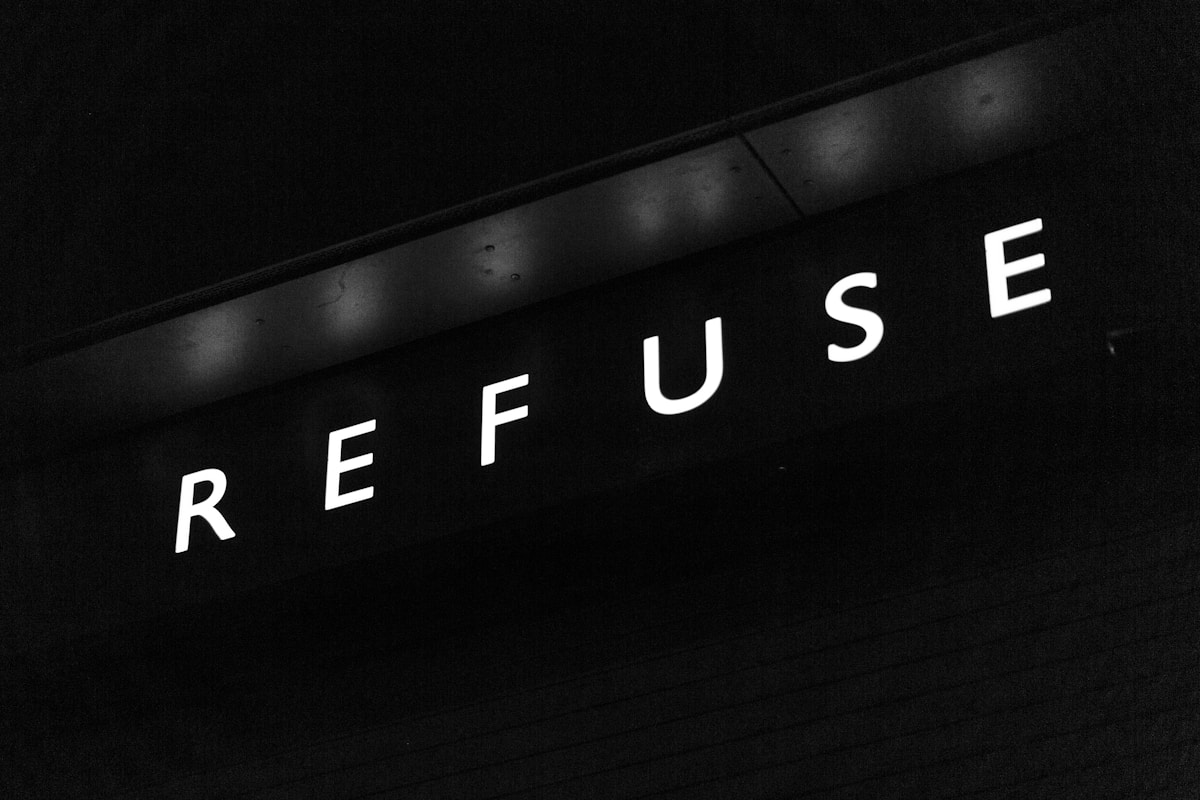
Honest festival tourism means identifying which “famous” festivals disappoint. These three receive heavy tourism promotion but consistently generate negative traveler reviews:
Over-Commercialized Event #1: Certain Lijiang “Minority Culture Shows”
Daily performances in Lijiang theaters marketed as “authentic minority festivals.” They’re professional song-and-dance shows with minority themes. Not actual festivals. Not connected to minority calendars or authentic practices.
Tourist Trap #2: Some Guilin “Cultural Villages”
Permanent minority-themed parks near Guilin that claim to showcase “daily festivals.” These are theme parks, not cultural experiences. Employees from various backgrounds wear minority costumes and perform scripted routines.
Disappointing Experience #3: Last-Minute Festival “Tours”
Budget tour operators offering festival trips without advance community relationships. These tours arrive at festivals without guide connections, cultural context, or appropriate positioning. You’re physically present but culturally absent.
Frequently Asked Questions: The Answers Tourism Sites Won’t Give
Q: Can I attend festivals without Chinese language ability?
Honest answer: Yes, but experience quality drops significantly. Basic Mandarin allows asking questions, understanding explanations, and connecting with younger minority community members (who often speak Mandarin). Zero Chinese leaves you photographing without comprehending.
Minimum useful phrases: “这是什么意思?” (What does this mean?), “可以拍照吗?” (May I photograph?), “谢谢你们分享文化” (Thank you for sharing your culture).
Q: Are these festivals “authentic” or “tourism performances”?
This question frustrates because it assumes binary categories. Reality is spectrum. Most accessible festivals contain both authentic community participation and tourism-oriented elements. Your job is distinguishing which parts represent genuine tradition versus tourism accommodation.
Framework: If locals would celebrate without tourist presence, it’s authentic. If the event only exists because tourists attend, it’s performance.
Q: Do minorities appreciate foreign tourists at their festivals?
Mixed feelings exist. Economic benefits are welcomed. Some community members genuinely enjoy cultural exchange. Others resent tourism’s commercializing effect on sacred traditions.
Your behavior matters enormously. Respectful tourists who attempt cultural understanding are generally welcomed. Tourists treating minorities as exotic photo props without engaging culturally are tolerated for economic reasons but not appreciated personally.
Q: Why do guides keep taking me to gift shops?
Commission-based guiding remains common in China tourism. Guides receive payments from shops when tourists purchase. This creates misaligned incentives.
Solutions: Before hiring guide, explicitly state “no shopping stops” and confirm in writing. Offer higher daily fee in exchange for zero commission shopping. If guide insists on shops, find new guide.
Q: Are solo female travelers safe at minority festivals?
Generally very safe. Minority cultures tend toward gender-egalitarian values compared to Han majority. Solo women report feeling secure at festivals.
Practical cautions: Some festivals involve heavy alcohol consumption. Night-time village walking requires flashlight (minimal street lighting). Basic travel safety applies (watch drinks, stay aware of surroundings).
Solo women actually have advantages—minority women often feel more comfortable interacting with female travelers than male visitors, creating richer cultural exchanges.
Q: Can I visit multiple festivals in one trip?
Logistically possible if festivals align. Culturally questionable if you’re rushing.
Each festival deserves 4-5 days minimum (2 days before for context, festival days, 1-2 days after for processing). Festival-hopping creates exhausting travel schedule and prevents depth.
Better strategy: Deep immersion in one minority group’s festival season. Example: Spend November in Guizhou attending multiple Miao village New Year celebrations. Same ethnic group, different villages, deeper cultural understanding than skipping between unrelated festivals.
Conclusion: The Festival Tourism Philosophy We Practice

After eight years organizing minority festival tours, our philosophy crystallized: The festival itself is often the least culturally valuable part of festival tourism.
The transformative experiences happen in village kitchens watching grandmothers prepare ritual foods. In early morning fields observing farmers conducting private ceremonies. During evening conversations when locals explain what the daytime spectacle actually meant.
The festival is the door. Cultural immersion is what lies beyond it.
We’ve watched travelers arrive treating minorities as fascinating exotic specimens. We’ve watched those same travelers leave with friendships, ongoing correspondence, and genuine cross-cultural understanding.
The difference? Time, humility, and willingness to value ordinary life alongside extraordinary festivals.
China’s minority festivals aren’t tourist attractions. They’re living cultural practices that communities have maintained despite enormous pressure to modernize and homogenize. Your attendance can support cultural preservation or accelerate cultural commodification. The choice reflects your approach.
Come prepared. Invest in cultural education. Hire local guides. Stay longer than feels necessary. Participate humbly. Spend money directly in communities. Return periodically—relationships matter more than single visits.
The festivals will reward this investment with experiences that travel agencies can’t package and tourism brochures can’t describe.
Travel China With Me specializes in authentic minority festival immersion experiences. We maintain decade-long relationships with minority communities in Guizhou, Yunnan, Guangxi, and Tibet. Our guides are cultural specialists, not just translators. We design transformative journeys valuing depth over convenience, cultural preservation over tourism performance, and genuine connection over photographic collection. If this philosophy resonates, we’d be honored to facilitate your minority festival exploration.


